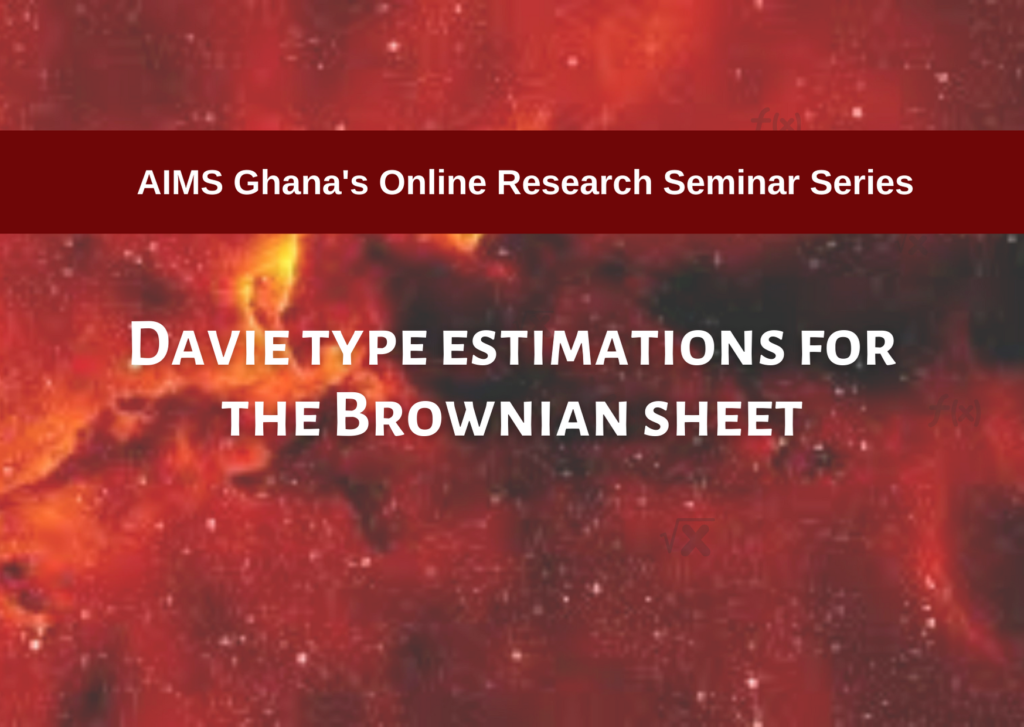Abstract: We prove and apply a local time-space integration formula to provide several Davie type bounds for the Brownian sheet. This local time-space integration formula is similar to that obtained by Eisenbaum for the reversible semimartingales. Davie type bounds are useful to prove strong uniqueness results for stochastic differential equations with irregular drifts. Such estimates originated with Davie where the author established a path by path uniqueness result for a stochastic differential equation driven by Brownian motion, with bounded Borel measurable drift.
Key References:
1. [Eisenbaum, 2000] Eisenbaum, N. (2000). Integration with respect to local time.
Potential analysis , 13(4):303–328.
2. [Eisenbaum, 2006] Eisenbaum, N. (2006). Local time–space stochastic calculus for Lévy processes. Stochastic processes and their applications , 116(5):757–778.
3. [Davie, 2007] Davie, A. M. (2007). Uniqueness of solutions of stochastic differential equations. International Mathematics Research Notices , Vol. 2007.
Speaker: Dr. Antoine-Marie Bogso (Research Associate, AIMS Ghana)

Antoine-Marie Bogso is a Research Associate at AIMS Ghana since May 2021 and a lecturer at the University of Yaounde. He received BSc and MSc degrees from the University of Yaounde I, Cameroon and a PhD in Probability theory from the University of Lorraine, France. He has authored and co-authored several research papers on the Peacock problem and Peacock processes. His research interests also include stochastic integrals with respect to multiparameter processes, stochastic differential equations driven by two-parameter processes, and stochastic partial differential equations with a two-parameter Brownian noise.
Coordinator: Hetsron Legrace Bamen Nyandjo
Google Meet Link HERE
We kindly urge all participants to mute themselves and turn off their cameras when they join the meeting.
NB: Presentations are 50 minutes long after which the speaker would respond to questions from participants. Participants can ask their questions by any or a combination of the following:1. By typing their questions in the chatbox.
2. By writing “I have a question(s)” in the chat box.3. Raising hands by clicking on the raise hand symbol.
The coordinator would then read out the questions to the presenter or ask the participant to ask his/her question(s).
With the permission of the speaker, we may also record the talk for later distribution upon request.

